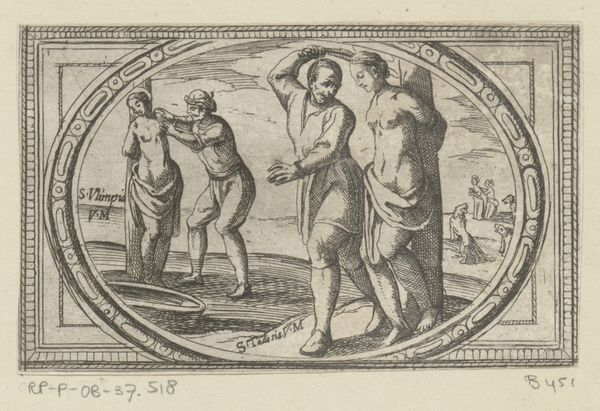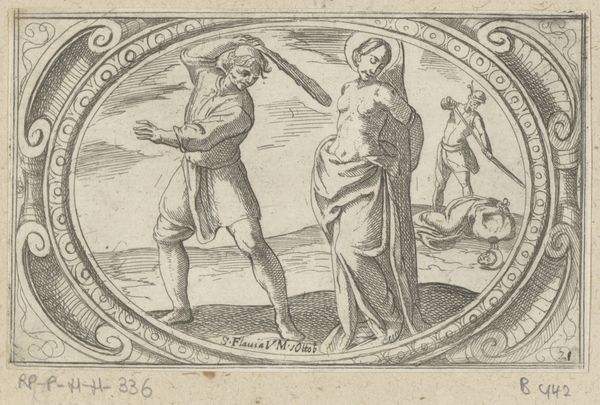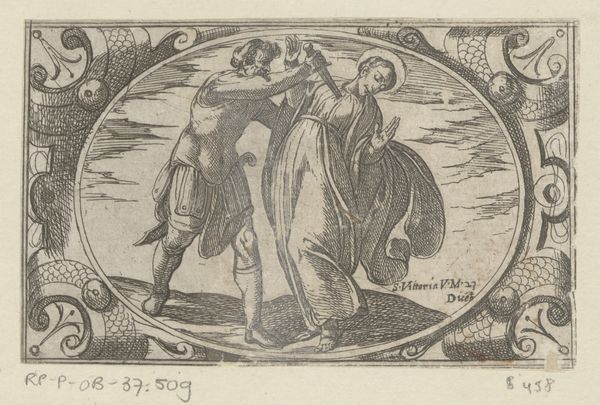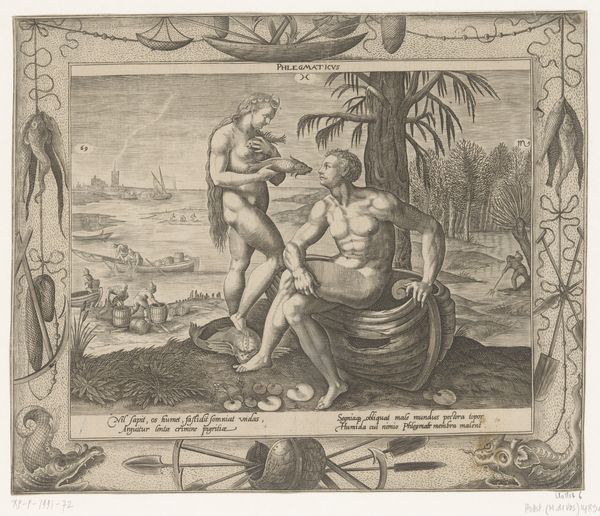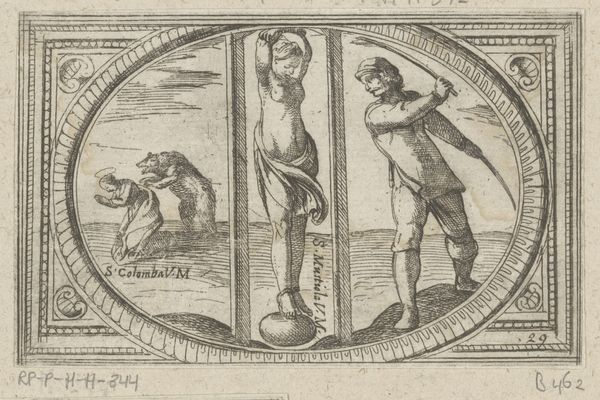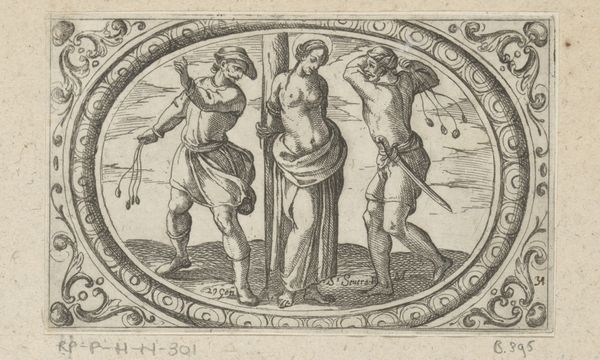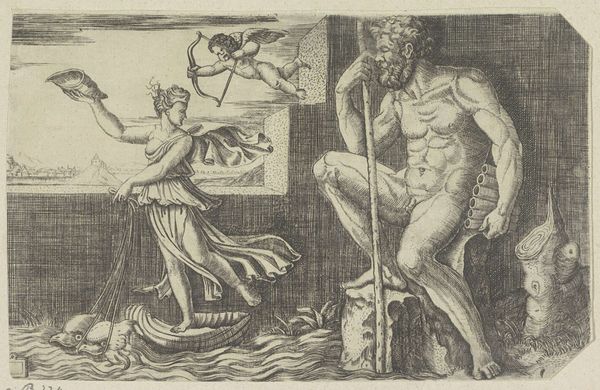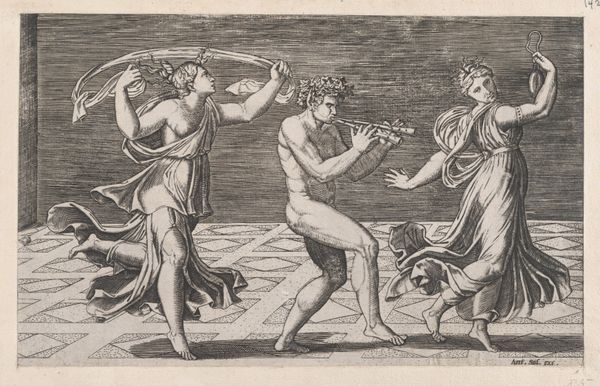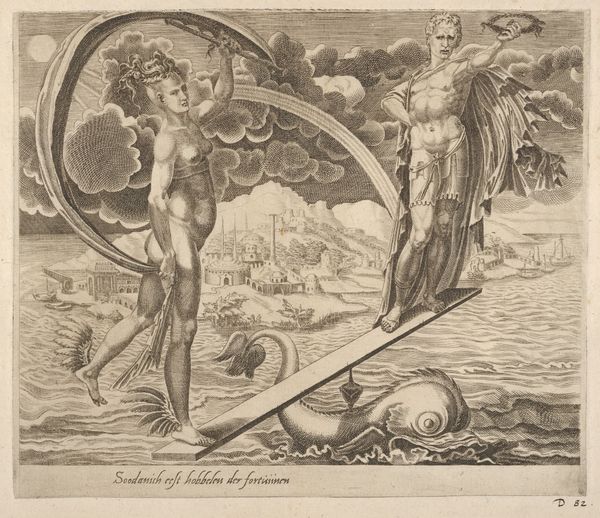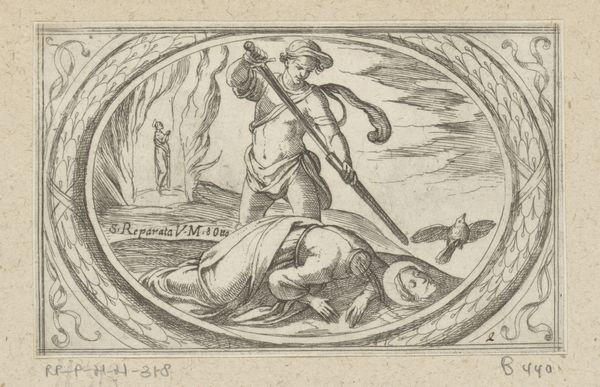
print, engraving
#
narrative-art
#
baroque
# print
#
figuration
#
line
#
history-painting
#
engraving
Dimensions: height 73 mm, width 114 mm
Copyright: Rijks Museum: Open Domain
Curator: Here we have Antonio Tempesta’s “H. Restituta,” an engraving created between 1565 and 1630, now held at the Rijksmuseum. My immediate feeling is... violence. The linear style really emphasizes the harshness of the scene. Editor: Absolutely. The image feels designed to shock and to inspire... or maybe control. Restituta’s suffering is centered; it’s brutal and unapologetic. The whole spectacle seems very deliberate, and rather dehumanizing. Curator: Look closer; the composition includes not only her tormentor but also, behind him, a figure seemingly conjured out of hell wielding a sword. Further back, someone who appears to be pleading, perhaps interceding for her. There’s also a prostrate figure near a shore being stoned. Restituta is surrounded by very powerful symbolic imagery. Her martyrdom makes a theological argument, I suspect. Editor: Exactly! The halo signifies her sainthood, of course, reinforcing that she's suffering for a cause, a truth beyond herself. But it’s disturbing to think about how frequently these images were deployed historically. Visuals like this become part of the machinery of power, encouraging a culture where violence against marginalized groups becomes commonplace under the guise of religious righteousness. How does this visual encoding shape our subconscious? Curator: Perhaps. Yet, even if this engraving functioned as propaganda at one time, can it also carry alternative meanings, speak to more universal themes? Images of female saints offered empowering examples of courage to the female faithful. I am not condoning the historical abuses, but also, it is impossible to ignore this image's symbolic power for oppressed Christians, surely. Editor: Perhaps. It does not immediately communicate those nuances, though. Still, I agree—art always possesses a polyvalent essence; our perspectives alter what we extract from it, and maybe we’re only seeing part of the picture… Curator: True. I came prepared to dissect Renaissance symbology, and you've shifted the ground to make me confront very real sociopolitical ramifications of a work like this one. Food for thought! Editor: And you helped to appreciate some older visual vernacular from a symbolic point of view. Definitely worth considering how it might function on several layers.
Comments
No comments
Be the first to comment and join the conversation on the ultimate creative platform.
